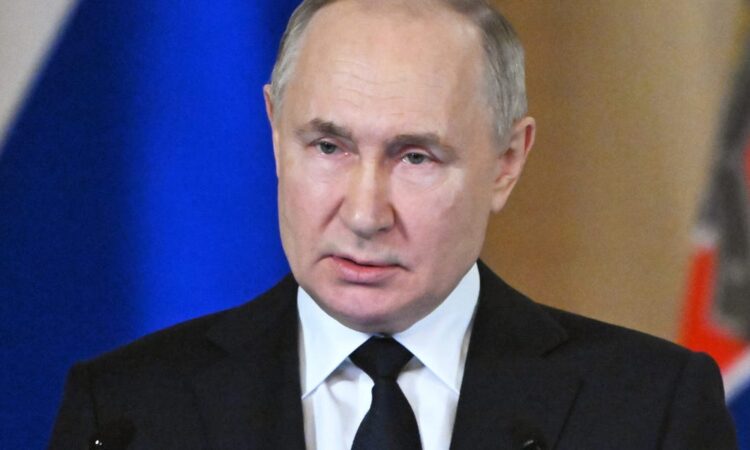
- Trade with Russia has slumped in the first quarter amid tightening US sanctions, the Financial Times said.
- Companies in countries such as China are turning to costly underground channels to keep trading.
- The ruble has also risen in popularity, as other currencies are pulled back.
Moscow’s key trade partners are getting cold feet, and it’s causing export volumes to shrink as a US clampdown triggers reprisal fears among those who do business with the Kremlin.
According to the Financial Times, shipments from Turkey and China have dropped meaningfully in the first quarter. For instance, exports from Ankara have plunged by a third year-to-year, while “high-priority” items sent to the region have fallen 40%. These are consumer goods that are critical to Moscow’s war machine.
Behind the shift is the US Treasury Department. After a December executive order bolstered its sanctioning power, the department has amplified warnings against foreign lenders that facilitate trade with Russia.
That’s included banks in other countries as well, such as the United Arab Emirates and Austria. To avoid Western repercussions, most have tightened their exposure to Russian counterparties, with the repercussions now felt by on-the-ground traders and investors.
“It’s getting harder and harder every month. One month it is dollars, the next month it is euros; within six months you basically won’t be able to do anything. The logical endpoint of this is turning Russia into Iran,” a senior Russian investor told the outlet, referencing the sanctions laid against Tehran.
Russia’s difficulty in moving either money or goods is a rising threat, as the country has escalated its wartime spending to keep its economy running.
In China, underground channels are cropping up, as domestic companies look for alternative ways to access the Russian consumer. With many banks no longer an option, currency brokers and cryptocurrency — an asset banned in China — are gaining popularity.
On the Russian side, the rise of middlemen is cutting into profits. According to FT, metals group oligarch Vladimir Potanin recently blamed these mediator’s for his company’s falling revenue, citing their 5% to 7% commissions.
But while such go-betweens are adding both complexity and costs to those still trying to trade with Russia, it may end up also adding difficulty to Western efforts to keep track of trade, sources told the outlet.
At the same time, the US’ crackdown has proliferated trade in the Russian ruble, as other currencies increasingly fall out of favor.
For instance, rubles are now the mainstay currency for Indian traders buying Moscow crude, after dealers in the UAE cut off payments in dirhams, a Russian banking source said. That’s as foreigners are still free to buy rubles on the Moscow Exchange when settling payments with Russian parties.
In fact, the share of Russian exports paid in rubles jumped to 40% in February, having hovered under 15% in pre-war years. Imports also witnessed a rise.
Still, the ruble faces restricted convertibility, making it difficult to reach trade volumes once possible under the dollar.





